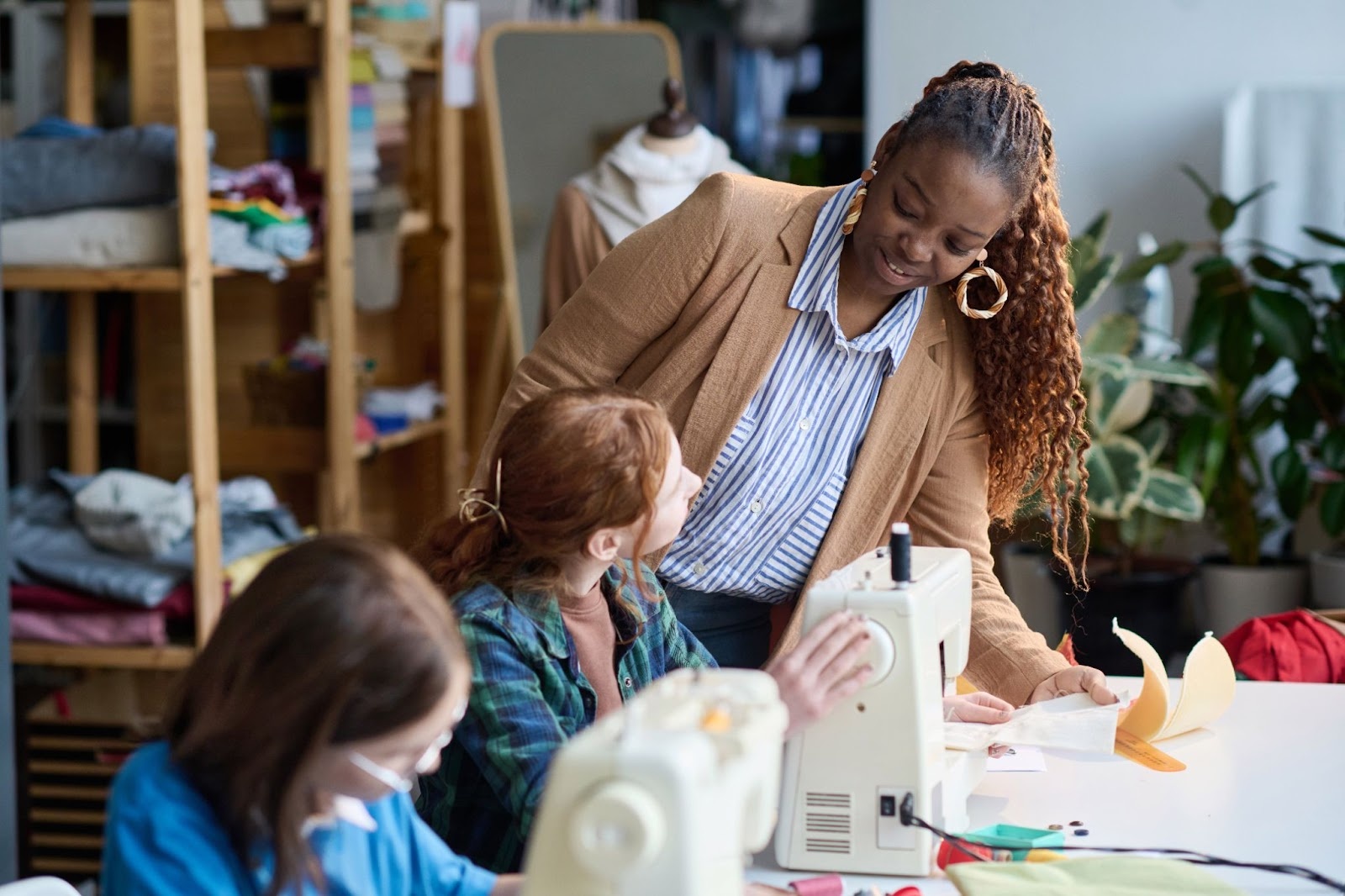
Fashion trends shift rapidly, prompting constant wardrobe updates for consumers. However, amidst this flux, a notable movement is emerging: the fast-fashion-to-slow-fashion revolution. As awareness of fashion's environmental and ethical impacts grows, more individuals are opting for sustainable choices, redefining their approach to consumption.
Transitioning from fast to slow fashion entails more than just replacing garments; it signifies a shift towards mindful consumption, prioritizing environmental stewardship and ethical production. It requires a reevaluation of our relationship with clothing, acknowledging the true costs of our choices and embracing alternatives that prioritize longevity, sustainability, and ethical practices. By embracing the principles of slow fashion, individuals can diminish their environmental impact, champion fair labor practices, foster diversity and innovation in fashion, and foster a deeper connection with their attire.
Fast Fashion vs. Slow Fashion: Unveiling the Ethical and Sustainable Gap
With countless options for personal expression, the world of clothing is fascinating. But as our understanding of the fashion industry's effects grows, an indispensable question is raised: are we putting style before sustainability?
This is where the contrasting concepts of fast fashion and slow fashion come into play. Fast and slow fashion represent two distinct approaches to clothing production: consumption and sustainability. Making decisions about our wardrobe, as well as how it affects the environment and society, requires us to be aware of the distinctions between these two paradigms.
What Is Fast Fashion
Fast fashion is characterized by its rapid production and distribution of inexpensive, trend-driven clothing by large retailers to meet consumer demand for the latest styles at affordable prices.
Here are some key aspects of fast fashion:
Mass Production
Fast fashion companies produce large quantities of apparel in a short amount of time and at a low cost. They often outsource production to low-cost countries with low labor costs and regulations.
Trend-Driven
Fast fashion thrives on the constant turnover of styles, with retailers launching new collections weekly to stay up-to-date with the latest trends.
Low-Quality
Fast fashion clothes are usually made from low-quality materials and use inefficient manufacturing processes, leading to low durability and short life spans.
Environmental Impact
Unfortunately, the fast fashion sector is one of the largest environmental contributors, causing pollution, resource depletion, and waste generation through over-consumption of water, chemical pollution, and textile waste.
Ethical Concerns
Fast fashion is often associated with low wages, dangerous working conditions, and poor labor standards, especially in developing countries, where garment workers often lack labor rights.
What Is Slow Fashion?
Slow fashion, in contrast, promotes a more sustainable and ethical approach to clothing production and consumption. It prioritizes longevity over disposability, thoughtful consumption over impulsive purchases, and quality over quantity.
Here are some principles of slow fashion:
Ethical Production
Fair labor practices, accountability, and transparency are prioritized in the slow fashion supply chain, guaranteeing that garment workers receive fair compensation and have safe working conditions.
Sustainable Materials
Slow fashion mitigates its adverse environmental effects and lessens its dependency on finite resources by reinforcing sustainable and eco-friendly materials like organic cotton, hemp, linen, and recycled textiles.
Timeless Design
Slow fashion encourages customers to invest in high-quality clothing that endures the test of time by emphasizing timeless designs and classic silhouettes that go beyond trends.
Local and Artisanal Production
Slow fashion supports local designers, artists, and craftspeople who emphasize quality, creativity, and craftsmanship by encouraging local and artisanal production.
Minimal Waste
Slow fashion seeks to minimize waste throughout the production process, from sourcing materials to manufacturing techniques to end-of-life disposal, through practices such as zero-waste pattern cutting, recycling, and upcycling.
By being aware of the differences between slow fashion and fast fashion, shoppers can lessen their environmental impact while supporting a more ethical and sustainable fashion industry by choosing clothing with greater awareness. Adopting mindful consumption habits, investing in high-quality wardrobe staples, or supporting ethical and transparent brands are just a few ways that embracing slow fashion principles can result in a more fashionable and sustainable wardrobe that benefits people and the environment.
Benefits of Transitioning From Fast Fashion to Slow Fashion
In recent years, as more people support switching to practicing sustainability, there has been a growing recognition of fast fashion's environmental and social impacts. As more individuals become fully aware of sustainability practices, transitioning from the fast-paced trends of fast fashion to the more sustainable practices of slow fashion becomes a trend. This shift represents a conscious decision to prioritize longevity over disposability, thoughtful consumption over impulsive purchases, and quality over quantity.
Transitioning from fast to slow fashion offers many benefits for both individuals and the environment.
Here are some compelling reasons to embrace the slow fashion movement:
Environmental Sustainability
The slow fashion industry reduces its overall environmental impact by prioritizing minimal waste, ethical production practices, and sustainable materials. Customers may help protect the environment and lessen pollution by purchasing clothing made of eco-friendly materials and endorsing companies that have open supply chains.
Ethical Production
Slow fashion promotes fair labor practices and ensures that garment workers are paid fair wages and provided with safe working conditions. By backing brands that prioritize ethical manufacturing, you can help stop the exploitation of workers and improve the lives of fashion workers, especially in poor countries.
Quality Over Quantity
Slow fashion prioritizes quality over quantity, encouraging consumers to invest in high-quality, long-lasting, classic garments. Fast fashion items may be made cheaply and quickly thrown away, while slow fashion pieces are made to last, which reduces the need for frequent re-shopping and saves money in the long term.
Timeless Style
Slow fashion focuses on timeless designs and classic silhouettes that transcend trends, allowing individuals to build a versatile wardrobe that withstands the test of time. Investing in classic pieces always in style will enable customers to create a more fashionable, eco-friendly wardrobe that represents their individual preferences and ideals.
Supporting Local Economies
Slow fashion is known for supporting local and artisanal production, small-scale designers, artisans, and craftspeople within communities. By choosing locally made garments, consumers can contribute to the growth of local economies, foster creativity and innovation, and build meaningful connections with the people behind their clothes.
Promoting Mindful Consumption
Slow fashion encourages mindful consumption habits, such as repairing, reusing, and recycling clothing, rather than constantly chasing the latest trends. By adopting a more intentional approach to shopping and focusing on quality rather than quantity, consumers can reduce their overall consumption and minimize their environmental footprint.

Embracing Slow Fashion for a Sustainable Wardrobe
Transitioning to slow fashion offers numerous benefits, from reducing environmental impact to supporting fair labor practices. By focusing on quality over quantity and opting for sustainable materials, you can create a wardrobe that reflects your values and personal style while helping create a more sustainable and fair fashion industry. Adopting slow fashion isn't just about changing your wardrobe. It's about changing your mindset, a mindset that embraces sustainability, ethics, and conscious consumption.
Let's make informed choices about our clothing purchases and shape a more sustainable future for the fashion industry and beyond.
Visit our Golden Poppy blog to learn more about our stylish women’s fashion!

Leave a comment